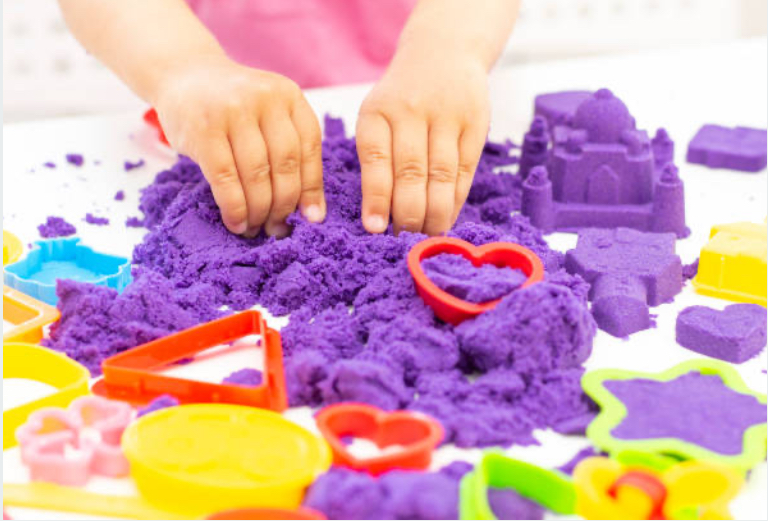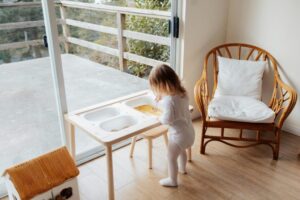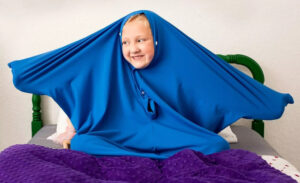Sensory sand, also known as kinetic sand, is one of the most effective and enjoyable tactile tools for autistic children. It offers calming, squishable play that improves fine motor skills, reduces anxiety, and supports sensory regulation. Whether your child is a sensory seeker or simply needs soothing input, sensory sand provides a mess-free, satisfying option for daily use.
🔍 Why Sensory Sand Works for Tactile Sensory Needs
- Calming & regulating: Soft, moldable texture offers soothing, predictable feedback
- Fine motor development: Improves grip, hand strength, and coordination
- Safe for sensory-sensitive kids: No sticky residue, no drying out, no smell
- Mess-free tactile play: Great alternative to slime or traditional sand
🛒 Top 3 Sensory Sand Products for Autistic Children
⭐ Kinetic Sand 2lb Beach Sand – Natural Feel
Best for: Sensory seekers & calming regulation
This soft, beach-like kinetic sand is ideal for first-time sensory sand users or kids who love squishy textures. It provides soothing tactile input without the mess. A favorite for calm corners and independent play.
Parent tip: Use in a bin or included tray with scoops or castle molds.
🌈 FlexiSand Rainbow Mix Set – Color Therapy Play
Best for: Kids who love color mixing & visual stimulation
This set includes five vibrant colors for scooping and shaping. It combines tactile and visual sensory play, making it a great tool for emotional expression and creativity. Excellent for play therapy and at-home sensory bins.
Parent tip: Let your child freely mix colors for non-pressured creativity.
🧺 Animal Sensory Sandbox Set with Bin
Best for: Indoor sensory stations & quiet solo play
This all-in-one sandbox kit includes a bin to contain the sand and reduce mess. It’s perfect for creating a consistent sensory space at home. The included animal figurines make it engaging without being overwhelming.
Parent tip: Use during after-school transitions to support decompression.
🧠 How to Use Sensory Sand Effectively
- Start with 5–10 minute sessions and let your child lead
- Use a shallow tray, bin, or sandbox for play containment
- Add scoops, cups, molds, or natural items (shells, stones)
- Try relaxing music or low lighting during sand play to increase calm
🧰 Activity Ideas
- Treasure Hunt: Hide objects and find them using fingers or tweezers
- Texture Exploration: Press various tools to make patterns or imprints
- Color Mixing: Use colored sand for emotion-based storytelling
- Mindful Movement: Encourage slow swirling, scooping, and raking for relaxation
🙋♀️ Frequently Asked Questions
Is kinetic sand safe for autistic children?
Yes. Most sensory sand products are made from non-toxic materials and are safe for ages 3+. Always supervise to prevent mouthing or ingestion.
What if my child doesn’t like touching the sand?
Try introducing tools like scoops or use gloves. Some children may take time to tolerate new textures, so follow their lead and don’t push it.
How often should my child use sensory sand?
Even 10–15 minutes a day can be helpful. Many parents incorporate sand play into daily sensory breaks, calm-down routines, or therapy sessions.
As an Amazon Associate, SensoryGift.com earns from qualifying purchases. Your clicks help support our mission to bring sensory tools to more families.



